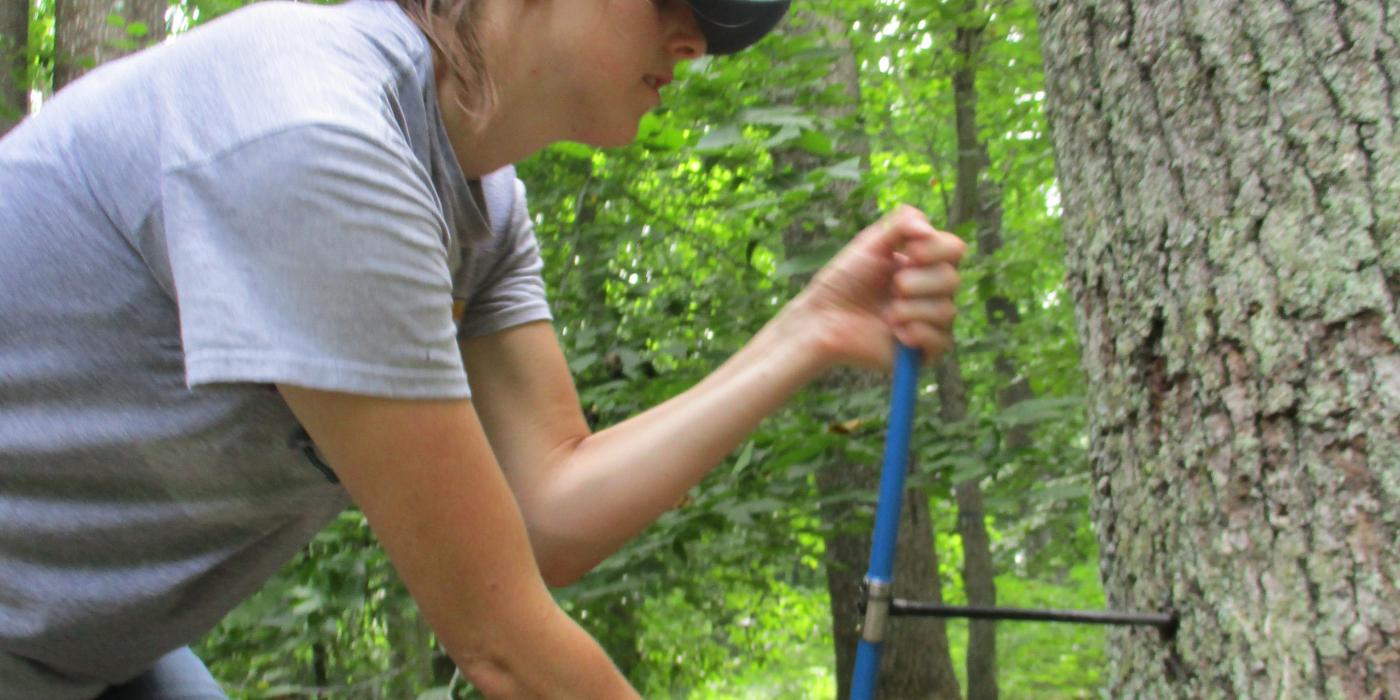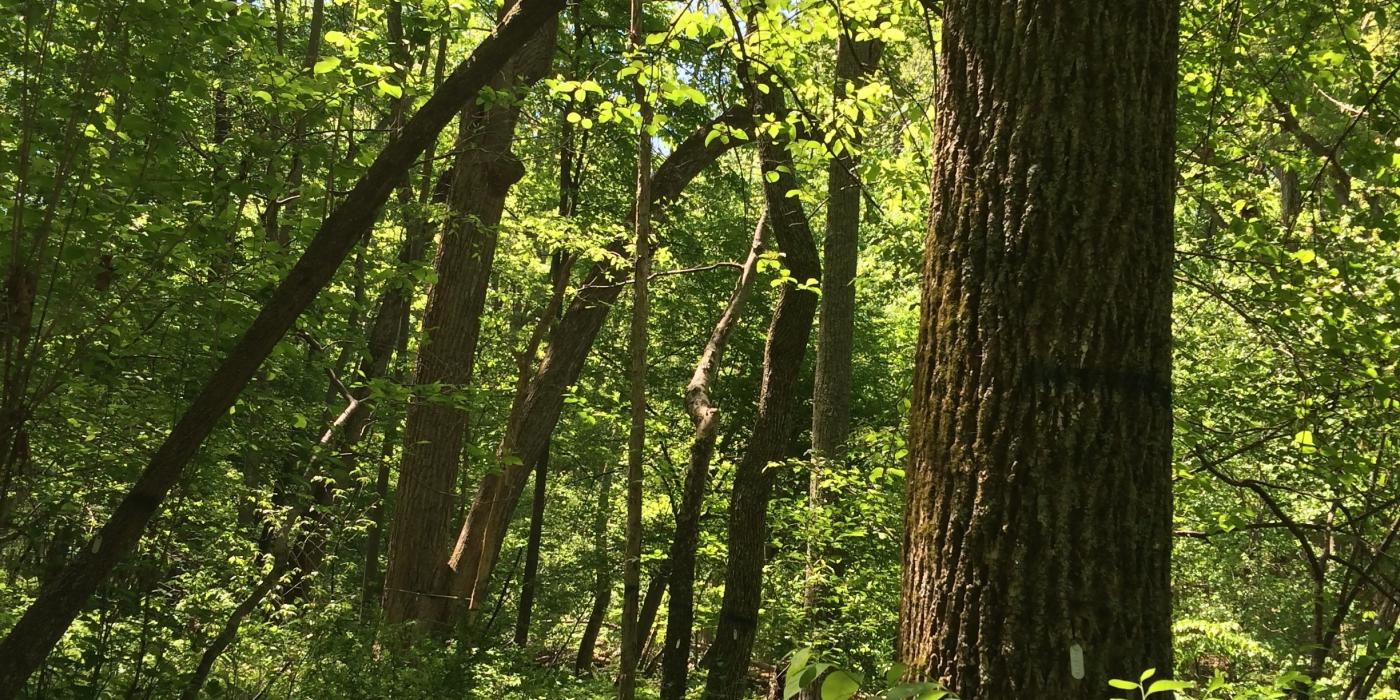A Beetle Invasion
If you want to understand why trees are dying, just ask Kristina Anderson-Teixeira.
Anderson-Teixeira’s job is to study forests and their interactions with climate. As a research biologist at SCBI’s Conservation Ecology Center, one of her particular interests is patterns in tree mortality.
The Smithsonian leads the Forest Global Observatory Network—the only network that applies a standardized protocol to forests all over the world. When a major event occurs, like the arrival of an invasive species, scientists are able to evaluate how the trees are affected.
Every year since 2014, Anderson-Teixeira and her team take a census of all the trees—living and dead—on a 50-acre plot at SCBI’s Front Royal, Virginia campus. Three species of native ash trees (Fraxinus spp.) live in the plot. They are large, dominant trees that grow into the canopy. When one dies, it impacts the surrounding forest. When many trees die all at once, there’s even greater cause for concern.
An invasive beetle, the emerald ash borer, was first detected at the plot in summer 2015. Native to Asia, it has rapidly made its way across the United States by hiding in firewood. The borer’s larvae kills a tree by feasting on its inner bark, cutting off routes that would otherwise transport nutrients from roots to canopy. This past summer, ash trees within SCBI’s plot started dying as a result of the emerald ash borer.
“Disturbances like the invasion of the emerald ash borer are relatively rare, but they have a big impact on all aspects of a forest,” said Anderson-Teixeira. “One of the motivations for doing this study is to capture which trees succumb and die first.”
Before scientists can understand how the emerald ash borer, or any other pest or pathogen, could affect trees young and old, they first need to know the normal mortality pattern for trees.
As they walk through the plot, scientists and volunteers visit every tree. If a tree is alive, they move on. If a tree is dead, they try to determine the factors associated with the tree’s death.
Did the tree naturally fall over?
Did a major event, such as a drought, play a role?
Or, is an invasive species to blame?
The team takes a sample of the tree core to determine its age and growth history. They also rate the ash trees according to the progression of emerald ash borer infection, from completely unaffected to dead.
“Unless we study tree mortality, we won’t fully understand how trees are responding to invasive species, climate change or other global factors,” said Anderson-Teixeira. “ForestGEO plots such as ours at SCBI give us an exciting and unique opportunity to follow the trajectories of individual tree and whole forest health.”
Anderson-Teixeira’s team includes Erika Gonzalez-Akre, Victoria Meakem, Alan Tepley, and a number of students and volunteers.

